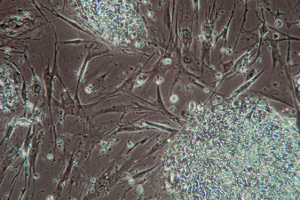 Image courtesy of Jeff Miller, University of Wisconsin-Madison.
Image courtesy of Jeff Miller, University of Wisconsin-Madison.
Deepak Srivastava – profiled in this week's radio story – is no stranger to QUEST, or to KQED News. Just last month, Srivastava made headlines when he announced that his lab had for the first time directly created beating heart cells from adult cells, without having to go through the stem cell stage.
But when I interviewed Srivastava for this story, I wanted to hear as well about his work with a type of stem cell called induced pluripotent cells. These are adult cells that have been coaxed into becoming like embryonic stem cells. Just like embryonic stem cells, these transformed cells are "pluripotent," meaning that they have the ability to develop into any other kind of cell.
If researchers like Srivastava can do pioneering work without requiring human embryonic stem cells, I wondered, then what to make of the recent ruling by US district court Judge Royce Lamberth?
From a scientific standpoint, at least, was the debate over the Dickey-Wicker Amendment a moot point?
And finally, if human embryonic stem cells are no longer necessary, where does that leave The California Institute For Regenerative Medicine, the taxpayer-funded, $3 billion foundation created specifically to ensure that human embryonic stem cell research continues, regardless of federal support?
